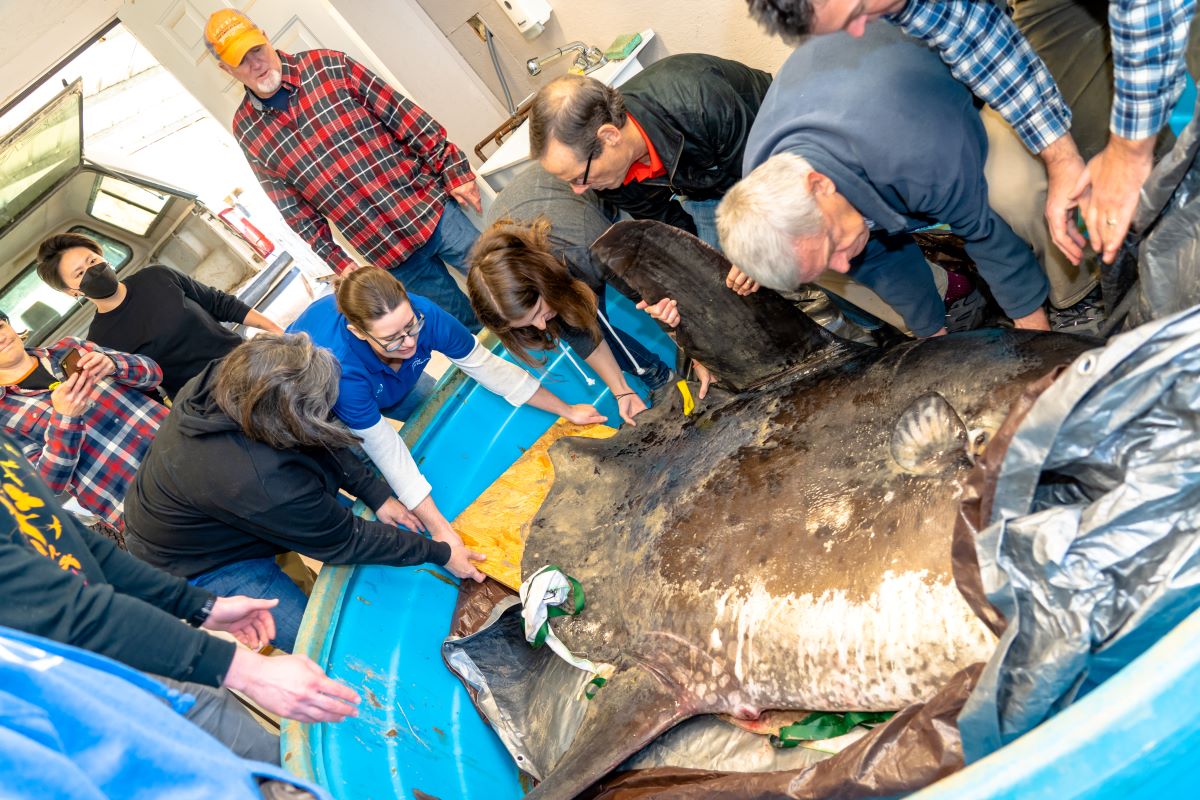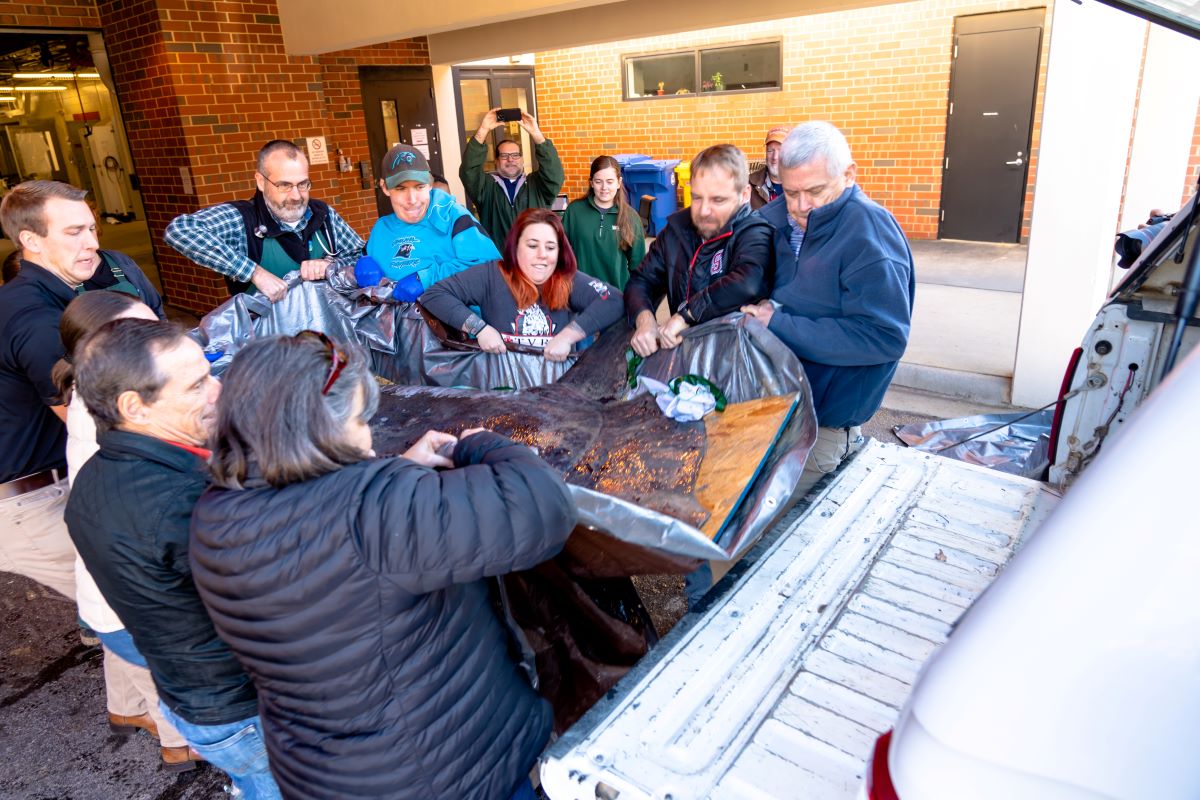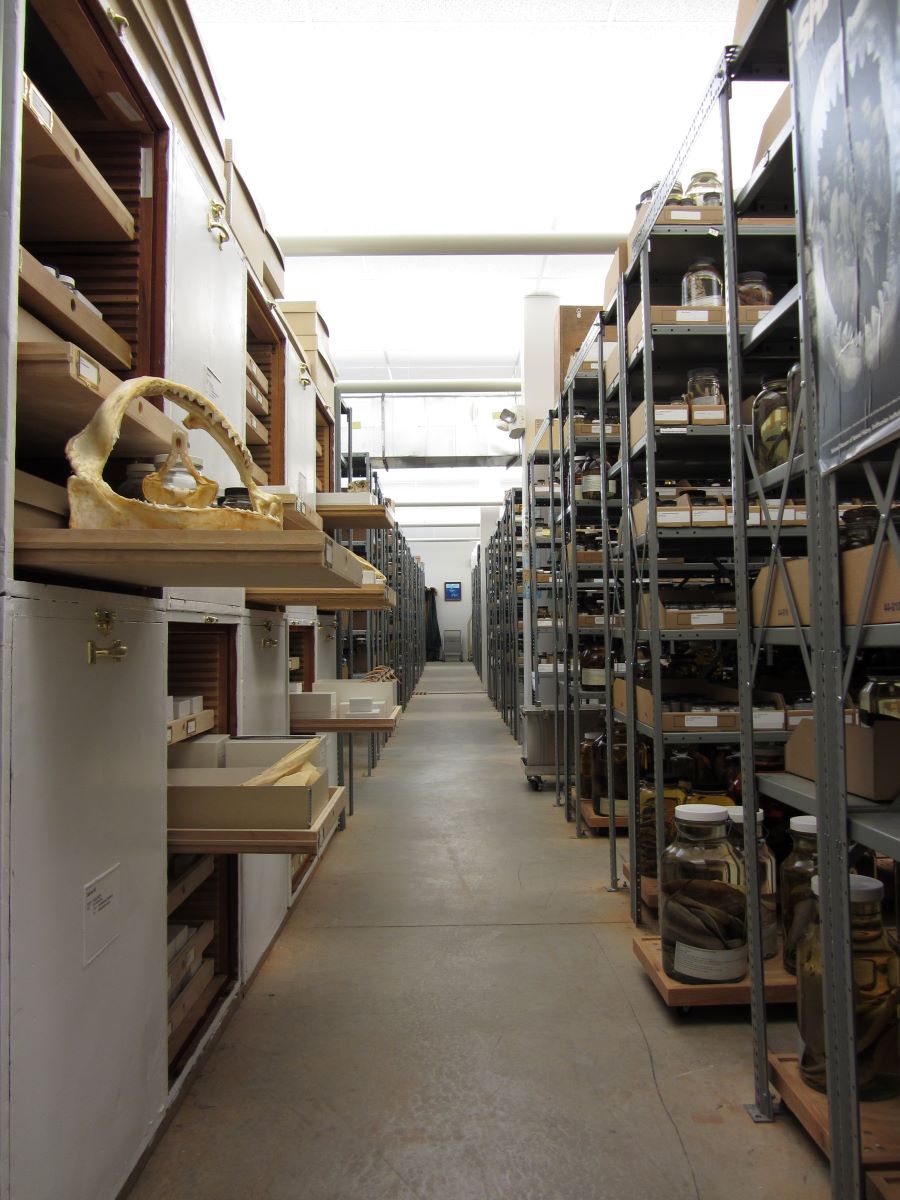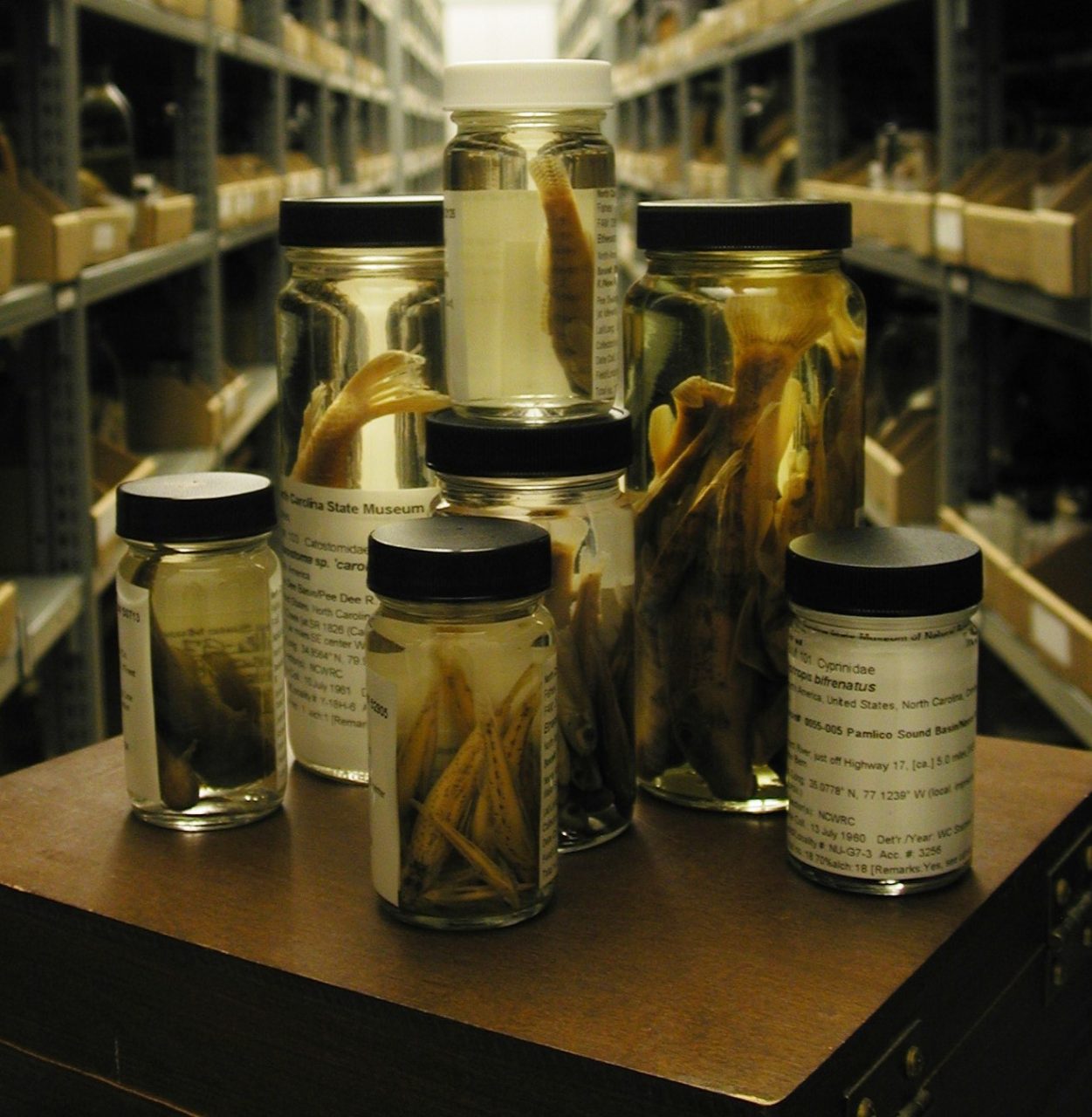
On the last day of November, a particularly cold day, a 450-pound sharptail mola washed up on the beach beside SeaView Fishing Pier on North Topsail Beach.
North Carolina Museum of Natural Sciences researchers in the Ichthyology Collections lab coordinated with volunteers in the area to move the fish into the back of a truck filled with ice. From there, they transported the specimen to N.C. State University’s veterinary program to weigh it using a livestock scale before heading to the lab that studies fish in Raleigh, where it’s currently being preserved.
Supporter Spotlight
Once the preservation process is complete, it will become part of the sizable ichthyology research collection at the museum. The collection has more than 1.4 million specimens, some dating back to the mid-1800s.
Lily Hughes, curator of ichthyology, told Coastal Review in a recent interview that the fish is soaking in formalin as part of the preservation process, one that will take at least another month.
Ichthyology Collections Manager Gabriela Hogue added that they’re working with a company on a design for a stainless-steel tank with a removable lid and plexiglass cutouts to display the fish. Though they’re unsure of the cost of the tank, the hope is a donor will step in “so everyone in North Carolina that visits the museum will be able to see this beautiful creature and researchers and students will be able to study it.”
In addition to the fish collection that spans 42 countries and represents one of the largest and most complete regional collections in the United States, the museum houses research collections containing fossils, birds, non-molluscan invertebrates, mammals, bivalves, amphibians and reptiles, geology, microbiology, astronomy and astrophysics, and veterinary sciences, according to the website.
Hughes explained that there are currently about 36,000 species of fish living today and they’re pretty biodiverse. Molas are ocean sunfish and there are five known species of mola. The mola that washed ashore Nov. 30 is a specific species called the sharptail mola.
Supporter Spotlight
“They are the heaviest fish that live in the ocean today. This one weighed 450 pounds, but the largest ocean sunfish that’s ever been caught was more than 6,000 pounds,” Hughes said.
She explained that they’re not sure why it washed up, though it’s not uncommon for molas to be found on beaches.
Reasons range from being ill from parasites, “they’re famously covered in parasites,” Hughes continued. The massive fish could have gotten tangled in fishing gear, struck by a boat, consumed a plastic bag, or been cold shocked. There were no obvious signs of cause of death, “so we don’t know right now. We may never know,” but those are some of the more common causes.
When the fish washed up next to SeaView Fishing Pier on North Topsail Beach, an employee called the state Division of Marine Fisheries for guidance, and eventually were put in contact with Hogue and Hughes.
Hughes said the fish was not healthy when it washed ashore, where it died a few hours later.
“It was actually very good that it washed up where it did and when it did,” Hogue added, explaining that the cold weather those few days kept the fish from deteriorating.
Immediately after the fish died, part of the fin was clipped and preserved in 95% ethanol for DNA study, Hogue said.
A group of volunteers offered to transport the fish the day it was found, but the nearly 500-pound creature was too large to fit in the bed of the truck.
The next day, Thursday, Dec. 1, Hogue and museum Chief Veterinarian Dan Dombrowski drove from Raleigh in a bigger truck to North Topsail Beach to collect the fish. By then about a half-dozen volunteers had moved the fish from the shore to the parking lot by the pier.
The volunteers helped get the fish into the back of the truck. The fish was iced down before Hogue and Dombrowski headed back to Raleigh.
The next question was “how do we weigh this thing?” Hogue said.
Dombrowski reached out to the veterinarian school at N.C. State to use its scale. Because it was still cold in Raleigh, they were able to leave the specimen in the truck overnight, after covering it with more ice, and then brought the fish to the school Friday morning, Dec. 2, to weigh it.

Hogue said students and staff helped move the fish on and off the bed of the truck to weigh it at the university. A group followed the truck carting the fish back to the research lab, also in Raleigh, where Hogue and Hughes do their work.
Because they didn’t have a vessel to store the specimen during the preservation process, Hughes and Hogue initially thought of a kiddie pool, but those are hard to find in December. Someone recommended an agricultural supply store, where they found an 8-foot stock tank.
Right now, the whole specimen is being preserved in a 10% formalin solution. Formalin is a derivative of formaldehyde. This chemical completely stops tissue deterioration, Hogue said. Because of the specimen’s size, the solution needed to be injected into the body cavity, which they spent all day doing the Friday the fish came into the lab.
After the fish is preserved by the formalin solution, which should be another month, the fish will be soaked in water to remove the solution. For the long term, the fish will stay in a 70% solution, a form of alcohol.
There’s already a line forming to study the sunfish.
Hogue said a fellow collections manager and curator would like to examine the parasites on the fish. The fish will likely undergo a body scan and probably be opened up to see if there’s any parasites inside.
“This is what it’s for,” Hogue said. “I like to think, of every specimen we have, let’s make it have died for a reason. And so, this can be used in perpetuity for whatever parasite studies want to be done. If somebody wants to come and do a gut analysis, if they want to look at what sex is it, how old.”
Once the fish is completely preserved, it will be entered into the ichthyology database that is globally accessible.
“Anyone in the world will have all that data. Everything from where it was collected, how it was collected, if in the process any parasites are found, all of that will be put into our database,” Hogue said.
She spends a lot of time making sure the specimens are properly preserved because she wants “to make sure that this stuff stays in perpetuity and so that’s what makes it all worth it, when people use the collection,” Hogue added.

The collection really is used all over the world, Hogue continued. Not just the data, but the specimens themselves, and the substantial tissue collection.
The collection, which has everything from eggs all the way to an almost 13-foot thresher shark and everything in between, is made up of different collections and research expeditions from different curators and researchers and donations. They also have a lot of deep-sea specimens, even specimens from Antarctica, and the University of North Carolina Institute of Marine Sciences collection.
The idea with the fish specimen collection is to preserve things not just for right now, but for the long term, Hughes said.
“Our collection is very diverse. We’re the fifth-largest regional repository in terms of collection,” Hogue added. “It’s the most Southeastern collection, which is wonderful because you know, the Southeast is such a hotspot for biodiversity. There’s so much going on. The cool thing about North Carolina is we’re the southernmost distributional point for a lot of fish species. And the northernmost point.”
In addition to researchers, the information is available to teachers and educators, “because they can look at things and say, ‘hey, you know, we live in North Topsail, what kind of things have been collected right off of our coast?’ and they can create a better picture of ‘what’s in my backyard?’” using the data, Hogue said.

As water temperatures change, they’re finding “a lot of weird stuff, too,” Hogue said, in both saltwater and freshwater. These changes are something the researchers wish to track over time.
Along with data being collected in the present day, the collection holds a trove of historical data and “that really is the basis for conservation and management,” specifically for the Wildlife Resources Commission and the Division of Marine Fisheries, Hogue said.
“They can look at the historical data and they can say, ‘OK, this is where we should be finding these species,’ and then they can target their studies from there and they can say, ‘OK, well now we’re not. Let’s check out: How do we conserve this? How do we manage this? What do we do? What do we need to do better?’” Hogue continued. “We’ll get changes over time in that aspect, and, really, I think make much more informed management and conservation decisions. Having the specimens vouchered here that they can go back and look at and verify identifications, if need be.”
Editor’s note: Assistant Editor Jennifer Allen’s husband is a member of the North Carolina Museum of Natural Sciences advisory commission.







